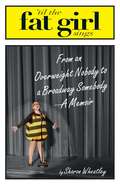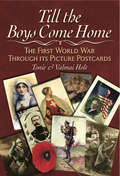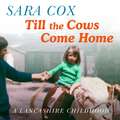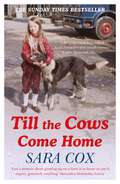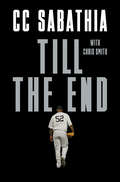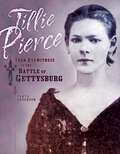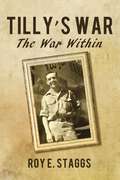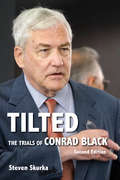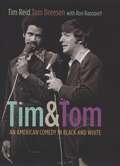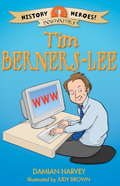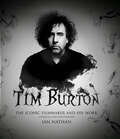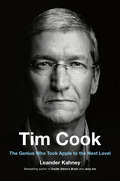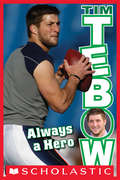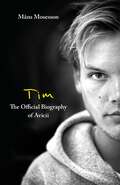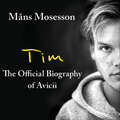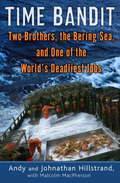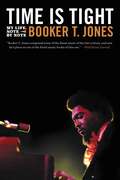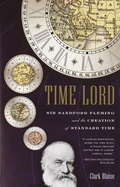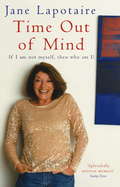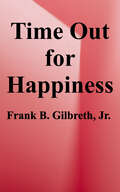- Table View
- List View
Til The Fat Girl Sings: From an Overweight Nobody to a Broadway Somebody-A Memoir
by Sharon WheatleyA Simon & Schuster eBook. Simon & Schuster has a great book for every reader.
Till the Boys Come Home: The First World War through its Picture Postcards
by Tonie Holt Valmai HoltThis is a new edition of this classic book which includes, in its over 700 postcards, many new, powerful propaganda images from nations on both sides of this epic conflict. Here are cards from the Queen's Collection, cards from America, Australia, Austria, Belgium, Britain, Bulgaria, Canada, Czechoslovakia, Egypt, France, Germany, Holland, Italy, Rumania, Salonika, Serbia... All are faithfully reproduced from the original, whether in dramatic black and white or in exuberant colour and they are all at least 100 years old. But this is not just a picture book.Here is a rich treasure trove to be dipped into for dilettante pleasure or to be read seriously as a thematic and contemporary history of the war. These cards have been collected over many years and a good number are rare and extremely valuable, both intrinsically and for the fascinating information contained in the informative running text and in the thoughtful captions (an example appears below, just one of the over 700). This is essential reading for anyone who wishes to sense the feelings and emotions of those who lived through, and fought in, the First World War; readers will appreciate the Twitter-like brevity of the captions, the power of the images and enjoy the chase to understand what lies behind them.This handsome and fascinating book uses hundreds of the immensely popular picture postcards of the '14-'18 period to document the course and effects of the Great War, with all its dramatis personae, its humour, suffering, patriotism, sentimentality and fervour.
Till the Cows Come Home: the bestselling memoir from a beloved presenter
by Sara CoxA funny and heart-warming love letter to childhood, family and growing up.Till the Cows Come Home is DJ and TV presenter Sara Cox's wonderfully written, funny coming of age memoir of growing up in 1980s Lancashire. The youngest of five siblings, Sara grew up on her father's cattle farm surrounded by dogs, cows, horses, fields and lots of 'cack'. The lanky kid sister - half girl, half forehead - a nuisance to the older kids, the farm was her very own dangerous adventure playground, 'a Bolton version of Narnia'. Her writing conjures up a time of wagon rides and haymaking and agricultural shows, alongside chain smoking pensioners, cabaret nights at the Conservative club and benign parenting. Sara's love of family, of the animals and the people around them shines through on every page. Unforgettable characters are lovingly and expertly drawn bringing to life a time and place. Sara later divided her childhood days between the beloved farm and the pub she lived above with her mother, these early experiences of freedom and adventure came to be the perfect training ground for later life.This funny, big-hearted and often moving telling of Sara Cox's semi rural upbringing is not what you'd expect from the original ladette, and one of radio's most enduring and well loved presenters.(P)2019 Hodder & Stoughton Limited
Till the Cows Come Home: the bestselling memoir from a beloved presenter
by Sara CoxTHE UPLIFTING AND HEARTWARMING LOVE LETTER TO FAMILY AND THE GREAT OUTDOORS'Cox is a natural storyteller... she brings that authentic voice to bear in her memoir. The tone is so intimate, chatty and friendly, so you feel as though she could be sitting next to you' Hannah Beckerman, Daily Express'endearing, engaging and very funny' Mirror'Coxy's memoir about growing up on a farm is as funny as you'd expect, genuinely touching and has some excellent 80s and 90s details. Her love of animals is infectious' Alexandra Heminsley, Grazia'The book is like a big warm hug, full of local characters and misadventures' Sophie Heawood, Observer'Made me laugh out loud...I loved it!' Lynda La Plante'Glorious springtime, haystacks and a herd of cows can all be found in this' Sunday Times Bestseller 'Warm and witty' - ExpressA funny and heart-warming love letter to childhood, family and growing up.Till the Cows Come Home is DJ and TV presenter Sara Cox's wonderfully written, funny coming of age memoir of growing up in 1980s Lancashire. The youngest of five siblings, Sara grew up on her father's cattle farm surrounded by dogs, cows, horses, fields and lots of 'cack'. The lanky kid sister - half girl, half forehead - a nuisance to the older kids, the farm was her very own dangerous adventure playground, 'a Bolton version of Narnia'. Her writing conjures up a time of wagon rides and haymaking and agricultural shows, alongside chain smoking pensioners, cabaret nights at the Conservative club and benign parenting. Sara's love of family, of the animals and the people around them shines through on every page. Unforgettable characters are lovingly and expertly drawn bringing to life a time and place. Sara later divided her childhood days between the beloved farm and the pub she lived above with her mother, these early experiences of freedom and adventure came to be the perfect training ground for later life.This funny, big-hearted and often moving telling of Sara Cox's semi rural upbringing is not what you'd expect from the original ladette, and one of radio's most enduring and well loved presenters.
Till the Cows Come Home: the bestselling memoir from a beloved presenter
by Sara CoxTHE UPLIFTING AND HEARTWARMING LOVE LETTER TO FAMILY AND THE GREAT OUTDOORS'Cox is a natural storyteller... she brings that authentic voice to bear in her memoir. The tone is so intimate, chatty and friendly, so you feel as though she could be sitting next to you' Hannah Beckerman, Daily Express'endearing, engaging and very funny' Mirror'Coxy's memoir about growing up on a farm is as funny as you'd expect, genuinely touching and has some excellent 80s and 90s details. Her love of animals is infectious' Alexandra Heminsley, Grazia'The book is like a big warm hug, full of local characters and misadventures' Sophie Heawood, Observer'Made me laugh out loud...I loved it!' Lynda La Plante'Glorious springtime, haystacks and a herd of cows can all be found in this' Sunday Times Bestseller 'Warm and witty' - ExpressA funny and heart-warming love letter to childhood, family and growing up.Till the Cows Come Home is DJ and TV presenter Sara Cox's wonderfully written, funny coming of age memoir of growing up in 1980s Lancashire. The youngest of five siblings, Sara grew up on her father's cattle farm surrounded by dogs, cows, horses, fields and lots of 'cack'. The lanky kid sister - half girl, half forehead - a nuisance to the older kids, the farm was her very own dangerous adventure playground, 'a Bolton version of Narnia'. Her writing conjures up a time of wagon rides and haymaking and agricultural shows, alongside chain smoking pensioners, cabaret nights at the Conservative club and benign parenting. Sara's love of family, of the animals and the people around them shines through on every page. Unforgettable characters are lovingly and expertly drawn bringing to life a time and place. Sara later divided her childhood days between the beloved farm and the pub she lived above with her mother, these early experiences of freedom and adventure came to be the perfect training ground for later life.This funny, big-hearted and often moving telling of Sara Cox's semi rural upbringing is not what you'd expect from the original ladette, and one of radio's most enduring and well loved presenters.
Till the End
by Chris Smith CC SabathiaA raw, compelling memoir of baseball, family, fame, addiction, and recovery, by one of the most beloved baseball players of his generation How does it feel to be born with enormous gifts, in a life shadowed by tragedy? What does it mean when the gift that opens the world for us is not enough to stop us from losing the things we love? And what new gifts do we find in that loss? Baseball had been CC Sabathia&’s life since he was a kid in gritty, baseball-obsessed Vallejo, California. He was a star by the time he was a preteen and a professional athlete when he was still a teenager. Everything he knew about how to be a person—an adult, a husband and father, a leader—he learned in rhythm with the baseball season, the every-fifth-day high-intensity spotlight of a starting pitcher, all while dealing with one of the sport&’s most turbulent eras: racism in a sport with diminishing black presence; the era of performance-enhancing drugs; and the increasing tension between high-value contracts and sports owners who moved players around like game pieces. But his biggest struggle was with his own body and mind: Buoyed his whole life by talent and a fiery competitive spirit, CC found himself dealing with the steady and eventually alarming breakdown of his own body and his growing addiction in a world that encouraged and enabled it.Till the End is the thrilling memoir of one of the most beloved players in the game, a veteran star of the sport&’s marquee team during its latest championship era. It&’s also a book about baseball—about the ins and outs of its most important and technical position and its evolution in this volatile era. But woven within it is the moving, universal story of resilience and mortality and discovering what matters.
Tillie Pierce: Teen Eyewitness to the Battle of Gettysburg
by Tanya AndersonImagine being fifteen years old, facing the bloodiest battle ever to take place on U.S. soil: the Battle of Gettysburg. In July 1863, this is exactly what happened to Tillie Pierce, a normal teenager who became an unlikely heroine of the Civil War (1861-1865). Tillie and other women and girls like her found themselves trapped during this critical three-day battle in southern Pennsylvania. Without training, but with enormous courage and compassion, Tillie and other Gettysburg citizens helped save the lives of countless wounded Union and Confederate soldiers. In gripping prose, Tillie Pierce: Teen Eyewitness to the of Battle Gettysburg takes readers behind the scenes. And through Tillie’s own words, the story of one of the Civil War’s most famous battles comes alive.
Tilly's War: The War Within
by Roy E. StaggsThe main character in this book, a true, real life person, was an unassuming man brought up in a large, working class family. His life would begin in 1918 and he and his family would survive the depression on near poverty wages. He would go on to serve as a decorated airman in World War Two and come home to restart his life suffering from PTSD. With that, life would deal him many adversities and challenges, many of them self-inflicted, but each time he would overcome. He would struggle with the effects of combat on civilian life and would use alcohol to substitute for counseling much to his dismay. Tilly as he was called by his wartime air crew, returned home and went back to work to put the war behind him and get on with life. <p><p> He would have a family of his own, raising three children on near poverty wages and suffered from alcoholism and depression most of his life while his family suffered the effects of life’s challenges. Much later in life, he began talking about his wartime experiences and this would help him to readjust to life as he knew it. However, returning to alcohol would bring him and his family hardships that would be difficult to reconcile.
Tilted: The Trials of Conrad Black, Second Edition
by Steven SkurkaWith the advent of Conrad Black’s new appeal, Steven Skurka is back to deliver a thorough, in-depth account of the controversial businessman’s legal difficulties. It was the trial that captivated observers on both sides of the Atlantic. Media titan Conrad Black, by turns respected and reviled for decades in Canada and around the world, faced off with U.S. prosecutors on charges of criminal fraud stemming from his activities with Hollinger International. As the only Canadian writer to attend the trials of Conrad Black, lawyer Steven Skurka delivers a thorough, in-depth account of the controversial businessman’s legal difficulties. Skurka offers analysis, insights, and personal anecdotes to present the clearest picture of the trials to date, featuring interviews with key members of the prosecution and defence, as well as a peek into the jury room during final deliberations. In the first edition of Tilted, Skurka showed how the prosecution attempted to "tilt" the trial in its favour, but he also demonstrated how Black unsuccessfully attempted to tilt the trial his way. Black lost his appeal to the Court of Appeals and began serving a six-and-a-half-year prison sentence in Florida. Black’s legal battles moved to the U.S. Supreme Court, followed by a second appeal in Chicago and leading eventually to a dramatic conclusion. Now Skurka brings the reader up to date on all of the recent developments in Conrad Black’s case, including new interviews and behind the scenes strategy.
Tim & Tom: An American Comedy in Black and White (None Ser.)
by Tim Reid Tom Dreesen Ron RapoportAs the heady promise of the 1960s sagged under the weight of widespread violence, rioting, and racial unrest, two young men--one black and one white--took to stages across the nation to help Americans confront their racial divide: by laughing at it.Tim and Tom tells the story of that pioneering duo, the first interracial comedy team in the history of show business--and the last. Tim Reid and Tom Dreesen polished their act in the nightclubs of Chicago, then took it on the road, not only in the North, but in the still-simmering South as well, developing routines that even today remain surprisingly frank--and remarkably funny--about race. Most nights, the shock of seeing an integrated comedy team quickly dissipated in uproarious laughter, but on some occasions the audience’s confusion and discomfort led to racist heckling, threats, and even violence. Though Tim and Tom perpetually seemed on the verge of making it big throughout their five years together, they grudgingly came to realize that they were ahead of their time: America was not yet ready to laugh at its own failed promise. Eventually, the grind of the road took its toll, as bitter arguments led to an acrimonious breakup. But the underlying bond of friendship Reid and Dreesen had forged with each groundbreaking joke has endured for decades, while their solo careers delivered the success that had eluded them as a team. By turns revealing, shocking, and riotously funny, Tim and Tom unearths a largely forgotten chapter in the history of comedy.
Tim Berners-Lee (History Heroes #6)
by Damian HarveyTim Berners Lee started off his career building computers out of old televisions. He is now one of the most prolific internet experts in the world and was responsible for founding the World Wide Web!Discover the stories of people who have helped to shape history, ranging from early explorers such as Christopher Columbus to more modern figures like Tim Berners-Lee, inventor of the World Wide Web.These chapter books combine historical fact with engaging narrative and humourous illustration, perfect for the newly independent reader.
Tim Burton: The Iconic Filmmaker and His Work (Iconic Filmmakers Ser.)
by Ian NathanAn unauthorized celebration of the life and films of one of the most popular and remarkable filmmakers of the last thirty years.A truly international filmmaker, Tim Burton has carved a reputation as one of the world’s greatest creative directors, famed for the visually arresting style of his films that combine with highly original storylines. This stunning treasury explores the influences on his development as a filmmaker and assesses how he has captured the fruits of his imagination on screen.Illustrated with many behind-the-scenes photographs and stunning film stills, chapters analyze the success and style of films such as Beetlejuice, Ed Wood and Mars Attacks!, and examine how Burton breathed new life into well-known stories that include Batman, Planet of the Apes and Charlie and the Chocolate Factory. as well as his latest films Alice Through the Looking Glass, Miss Peregrine’s Home for Peculiar Children, and Beetlejuice 2.Get to the know the man behind classic films such as Edward Scissorhands, The Nightmare Before Christmas, Corpse Bride and Alice in Wonderland and learn more about the iconic filmmaker and his work.A must for any film buffs!
Tim Cook: The Genius Who Took Apple to the Next Level
by Leander KahneyJournalist Leander Kahney reveals how CEO Tim Cook has led Apple to astronomical success after the death of Steve Jobs in 2011. The death of Steve Jobs left a gaping void at one of the most innovative companies of all time. Jobs wasn't merely Apple's iconic founder and CEO; he was the living embodiment of a global megabrand. It was hard to imagine that anyone could fill his shoes--especially not Tim Cook, the intensely private executive who many thought of as Apple's "operations drone."But seven years later, as journalist Leander Kahney reveals in this definitive book, things at Apple couldn't be better. Its stock has nearly tripled, making it the world's first trillion dollar company. Under Cook's principled leadership, Apple is pushing hard into renewable energy, labor and environmentally-friendly supply chains, user privacy, and highly-recyclable products. From the massive growth of the iPhone to lesser-known victories like the Apple Watch, Cook is leading Apple to a new era of success.Drawing on access with several Apple insiders, Kahney tells the inspiring story of how one man attempted to replace someone irreplacable, and--through strong, humane leadership, supply chain savvy, and a commitment to his values--succeeded more than anyone had thought possible.
Tim Tebow: Always a Hero
by Tim PolzerAn easy-to-read biography of one of the NFL's hottest stars!It's Tebow Time! With an incredible amount of talent and the ability to win huge games, Tim Tebow is the player that every football fan is talking about. Follow Tim from his early high school years, his highly successful college career, through his recent trade to the New York Jets in this easy-to-read story filled with photographs and fun facts.
Tim and Tom: An American Comedy in Black and White
by Tim Reid Tom Dreesen Ron RapoportAs the heady promise of the 1960s sagged under the weight of widespread violence, rioting, and racial unrest, two young men--one black and one white--took to stages across the nation to help Americans confront their racial divide: by laughing at it. Tim and Tom tells the story of that pioneering duo, the first interracial comedy team in the history of show business--and the last. Tim Reid and Tom Dreesen polished their act in the nightclubs of Chicago, then took it on the road, not only in the North, but in the still-simmering South as well, developing routines that even today remain surprisingly frank--and remarkably funny--about race. Most nights, the shock of seeing an integrated comedy team quickly dissipated in uproarious laughter, but on some occasions the audience's confusion and discomfort led to racist heckling, threats, and even violence. Though Tim and Tom perpetually seemed on the verge of making it big throughout their five years together, they grudgingly came to realize that they were ahead of their time: America was not yet ready to laugh at its own failed promise. Eventually, the grind of the road took its toll, as bitter arguments led to an acrimonious breakup. But the underlying bond of friendship Reid and Dreesen had forged with each groundbreaking joke has endured for decades, while their solo careers delivered the success that had eluded them as a team. By turns revealing, shocking, and riotously funny, Tim and Tom unearths a largely forgotten chapter in the history of comedy.
Tim – The Official Biography of Avicii
by Måns MosessonThe intimate biography of the iconic DJ who was lost too soon.Like a firework against the night sky, the DJ and producer Tim Bergling exploded onto the music scene. A musical visionary who, through his sense for melodies, came to define the era when Swedish and European house music took over the world.But Tim Bergling was also an introverted and fragile young man who was forced to grow up at an inhumanly fast pace. After a series of emergencies resulting in hospital stays, he stopped touring in the summer of 2016. Barely two years later, he took his own life.Tim - The Biography of Avicii is written by the award-winning journalist Måns Mosesson, who was given unique access to Tim's own notes, as well as interviews with Tim's family, friends and colleagues in the music business. The book paints an honest picture of Tim and his search in life, not shying from the difficulties that he struggled with.
Tim – The Official Biography of Avicii
by Måns MosessonThe intimate biography of the iconic DJ who was lost too soon.Like a firework against the night sky, the DJ and producer Tim Bergling exploded onto the music scene. A musical visionary who, through his sense for melodies, came to define the era when Swedish and European house music took over the world.But Tim Bergling was also an introverted and fragile young man who was forced to grow up at an inhumanly fast pace. After a series of emergencies resulting in hospital stays, he stopped touring in the summer of 2016. Barely two years later, he took his own life.Tim - The Biography of Avicii is written by the award-winning journalist Måns Mosesson, who was given unique access to Tim's own notes, as well as interviews with Tim's family, friends and colleagues in the music business. The book paints an honest picture of Tim and his search in life, not shying from the difficulties that he struggled with.
Tim – The Official Biography of Avicii
by Måns MosessonThe intimate biography of the iconic DJ who was lost too soon.Like a firework against the night sky, the DJ and producer Tim Bergling exploded onto the music scene. A musical visionary who, through his sense for melodies, came to define the era when Swedish and European house music took over the world.But Tim Bergling was also an introverted and fragile young man who was forced to grow up at an inhumanly fast pace. After a series of emergencies resulting in hospital stays, he stopped touring in the summer of 2016. Barely two years later, he took his own life.Tim - The Biography of Avicii is written by the award-winning journalist Måns Mosesson, who was given unique access to Tim's own notes, as well as interviews with Tim's family, friends and colleagues in the music business. The book paints an honest picture of Tim and his search in life, not shying from the difficulties that he struggled with.
Timaeus of Tauromenium and Hellenistic Historiography
by Christopher A. BaronTimaeus of Tauromenium (350-260 BC) wrote the authoritative account of the Greeks in the Western Mediterranean. Like almost all the Hellenistic historians, his work survives only in fragments. Beyond an up-to-date treatment of this important author, this book shows that both the nature of the evidence and modern assumptions about historical writing in the Hellenistic period have skewed our treatment and judgement of lost historians. For Timaeus, much of our evidence is preserved in the polemical context of Polybius' Book 12. When we move outside that framework and examine the fragments of Timaeus in their proper context, we gain a greater appreciation for his method and his achievement, including his use of polemical invective and his composition of speeches. This examination of Timaeus also conveys a broader impression of the major lines of Hellenistic historiography.
Time Bandit: Two Brothers, the Bering Sea, and One of the World's Deadliest Jobs (Playaway Adult Nonfiction Ser.)
by Malcolm Macpherson Johnathan Hillstrand Andy HillstrandThe story of two brothers, Johnathan and Andy Hillstrand, who are maverick fisherman on the Bering Sea. They share the skippering duties on board their family-operated vessel, the Time Bandit. They are totally outrageous characters, taking on what is known to be the most dangerous job in the world. The Bering Sea is dangerous and mercurial and can steal years from a fisherman's life and Time Bandit is the name of the fishing vessel the brothers use to hook the Alaskan King Crabs. In pursuit of their daily catch, the brothers brave ice floes and heaving waves 60ft high, the perils of 1000lb steel crab traps thrown about by the wind and the constant menace of open water. The details of their childhood make you wonder how they ever lived past the age of ten! This amazing story, co-written with Malcolm MacPherson, brings to life the heart-in-your-throat existence of the Hillstrand brothers.
Time Flies
by Bill CosbyWE'RE ALL GETTING OLDER, AND BILL COSBY KEEPS GETTING BETTER<P> America's best-loved humorist, media personality and bestselling author now brings his unique warmth, wisdom and wit to a subject common to all: aging. From five to fifty and beyond, Bill Cosby takes us on a hilarious romp through the trials and tribulations of growing—and being—older. Funny, highly personal, and with just the right tugs on the heartstrings, Time Flies is Cosby at his best.
Time Is Tight: My Life, Note by Note
by Booker T. JonesThe long-awaited memoir of Booker T. Jones, leader of the famed Stax Records house band, architect of the Memphis soul sound, and one of the most legendary figures in music. From Booker T. Jones's earliest years in segregated Memphis, music was the driving force in his life. While he worked paper routes and played gigs in local nightclubs to pay for lessons and support his family, Jones, on the side, was also recording sessions in what became the famous Stax Studios-all while still in high school. Not long after, he would form the genre-defining group Booker T. and the MGs, whose recordings went on to sell millions of copies, win a place in Rolling Stone's list of top 500 songs of all time, and help forge collaborations with some of the era's most influential artists, including Otis Redding, Wilson Pickett, and Sam & Dave. Nearly five decades later, Jones's influence continues to help define the music industry, but only now is he ready to tell his remarkable life story. Time is Tight is the deeply moving account of how Jones balanced the brutality of the segregationist South with the loving support of his family and community, all while transforming a burgeoning studio into a musical mecca. Culminating with a definitive account into the inner workings of the Stax label, as well as a fascinating portrait of working with many of the era's most legendary performers-Bob Dylan, Willie Nelson, and Tom Jones, among them-this extraordinary memoir promises to become a landmark moment in the history of Southern Soul.
Time Lord
by Clark BlaiseIt is difficult today to imagine life before standard time was established in 1884. In the middle of the nineteenth century, for example, there were 144 official time zones in North America alone. The confusion that ensued, especially among the burgeoning railroad companies, was an hourly comedy of errors that ultimately threatened to impede progress. The creation of standard time, with its two dozen global time zones, is one of the great inventions of the Victorian Era, yet it has been largely taken for granted.In Time Lord, Clark Blaise re-creates the life of Sanford Fleming, who struggled to convince the world to accept standard time. It's a fascinating story of science, politics, nationalism, and the determined vision of one man who changed the world. Set in a time marked by substantial technological and cultural transformation, Time Lord is also an erudite exploration of art, literature, consciousness, and our changing relationship to timeFrom the Trade Paperback edition.
Time Out Of Mind
by Jane LapotaireWho are you when your brain is not you?'Jane Lapotaire is one of the lucky ones. Many people do not survive, let alone live intelligently and well again once they have suffered cerebral haemorrhage. In the long haul back to life - 'nearly dying was the easy bit' - she's learned much, some of it very hard lessons. Some friendships became casualties; family relations had to be redefined; and her work as an actress took a severe battering. The stress of living is felt that much more keenly when 'sometimes I still feel as if I am walking around with my brain outside my body. A brain still all too available for smashing by noise, physical jostling, or any form of harshness'. But she has survived and now believes it herself when people say how lucky she is.This is a very moving, darkly funny, honest book about what happens when the 'you' you've known all your life is no longer the same you.
Time Out for Happiness
by Frank B. Gilbreth"Frank Gilbreth chronicles the extraordinary partnership of his parents, which produced not only a dozen children but landmark contributions in the field of scientific management. His story follows Lillie Gilbreth from her childhood in Oakland, California, through her commencement day speech at Berkeley (at a time when few women attended college) to the day in Boston where the slim, shy girl from the West met the big, brash, and bluster Easterner who ran a successful contracting business and dabbled in time and motion studies."
